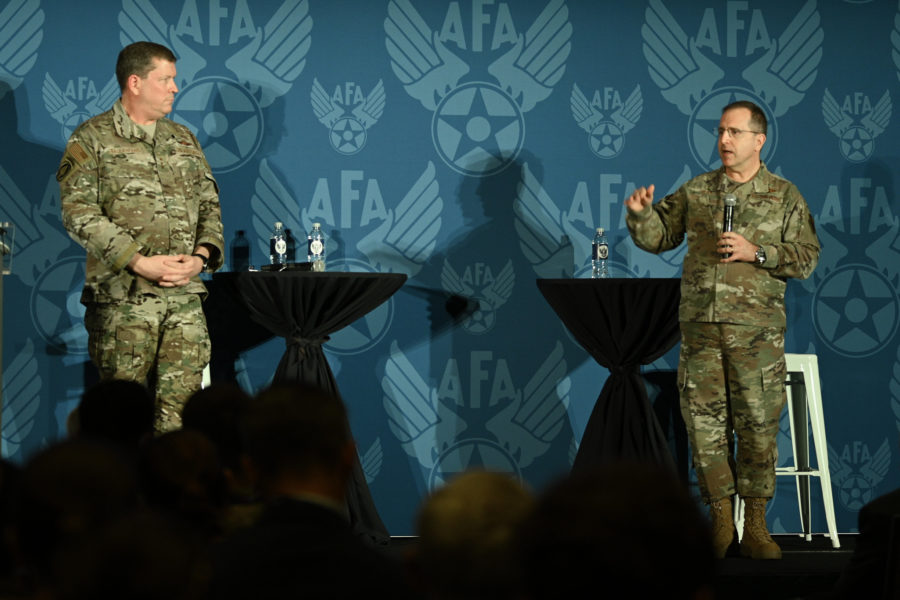During a recent test, an MC-130J flew low over the Gulf of Mexico, not far from the Hurlburt Field headquarters of Air Force Special Operations Command, loaded with palletized munitions. But this was no ordinary resupply mission.
The palletized munitions were pushed out the back of the aircraft, floating toward the water in parachutes until, one by one, cruise missiles fired, adjusting mid-air and climbing to cruise altitude to travel miles away to strike a simulated oil barge.
“Why in the world would AFSOC be launching cruise missiles out of the back of a C-130?” AFSOC commander Lt. Gen. James C. Slife asked a standing-room-only crowd of Airmen, Guardians, and industry experts at the AFA Warfare Symposium in Orlando, Fla., March 3.
“Because if our adversaries have to look at every C-130 and every C-17 and wonder what’s in the back, and whether that C-17 is in fact a long-range fire squadron, it changes their calculus,” Slife explained.
The Dec. 17, 2021, Rapid Dragon live fire test deployed from a cargo aircraft was two years in the making. The next live fire test with a C-17 is slated for the spring of 2022, he noted. The tests are part of AFSOC’s shift from the asymmetric warfare conducted in the Middle East over the past decades to a competition with a peer or near-peer adversary such as China or Russia.
“Yes, the last few decades have been laser-focused on counter-VEO [violent extremist organization] operations,” Air Force Lt. Gen. Tony D. Bauernfeind, vice commander of U.S. Special Operations Command, told the audience, describing a shift that began with the 2018 National Defense Strategy.
“In FY 22, over 30 percent of our operations will be against great power competitors,” he said—“to assure allies, to make sure we’re all preparing the environment to make sure we are forward, where we need to be, to have the effects to provide the options that the nation needs.”
That distribution of operations will only climb in 2023 and 2024, Bauernfeind said.
“From an operational perspective, not only is change going to happen, but change has been happening since 2018,” he added.
In a pull-aside interview after the presentation, Bauernfeind told Air Force Magazine that special operators will forward deploy for more engagements with allies and partners in the U.S. European Command and U.S. Indo-Pacific Command areas of operations, with less emphasis on U.S. Central Command or U.S. Africa Command.
“We are going to show a bond with our allies and partners, both in INDOPACOM and in EUCOM,” he emphasized. “Through that combined power comes an element of deterrence to any adversary that would want to challenge [us].”
Bauernfeind said Defense Secretary Lloyd J. Austin III has “doubled down” on the great power emphasis initiated by Defense Secretary James N. Mattis, who inked the last NDS. And Air Force Secretary Frank Kendall, in his earlier symposium keynote, said he expects the emphasis to remain “China, China, China,” despite Russia’s ongoing war in Ukraine.
In addition to closer collaboration with allies and partners, Austin has also directed special operations forces to work more closely with interagency teammates, including the State Department, Department of Justice, and Intelligence Community.
“Under Secretary Austin, this is a priority, so it’s easy for us to move,” Bauernfeind added. While the organization is always planning, the crisis in Eastern Europe has led to an uptick in interest from NATO eastern flank nations.
“Anytime there is a crisis, anybody who is affected by the crisis is going to respond and be a part of planning efforts,” Bauernfeind said.
